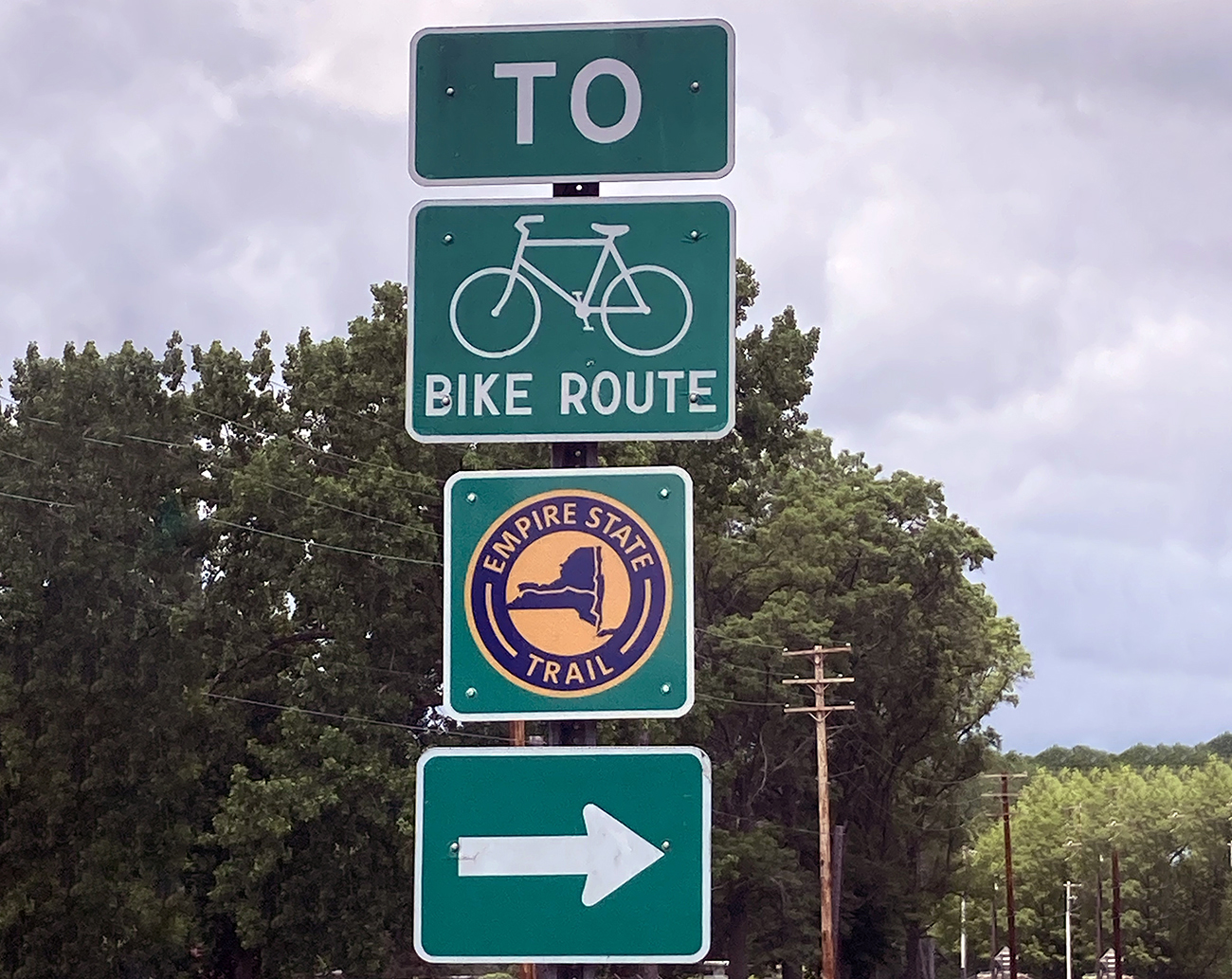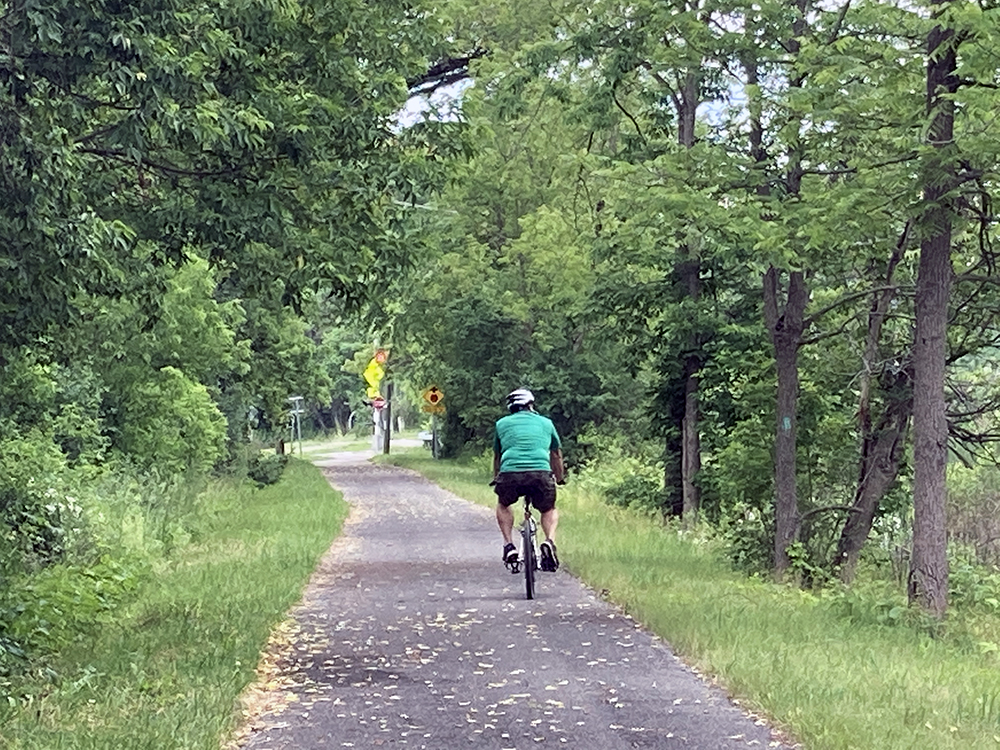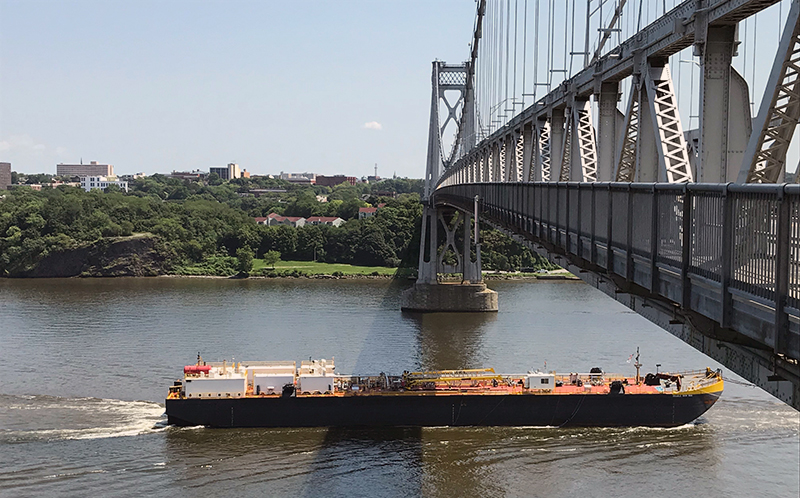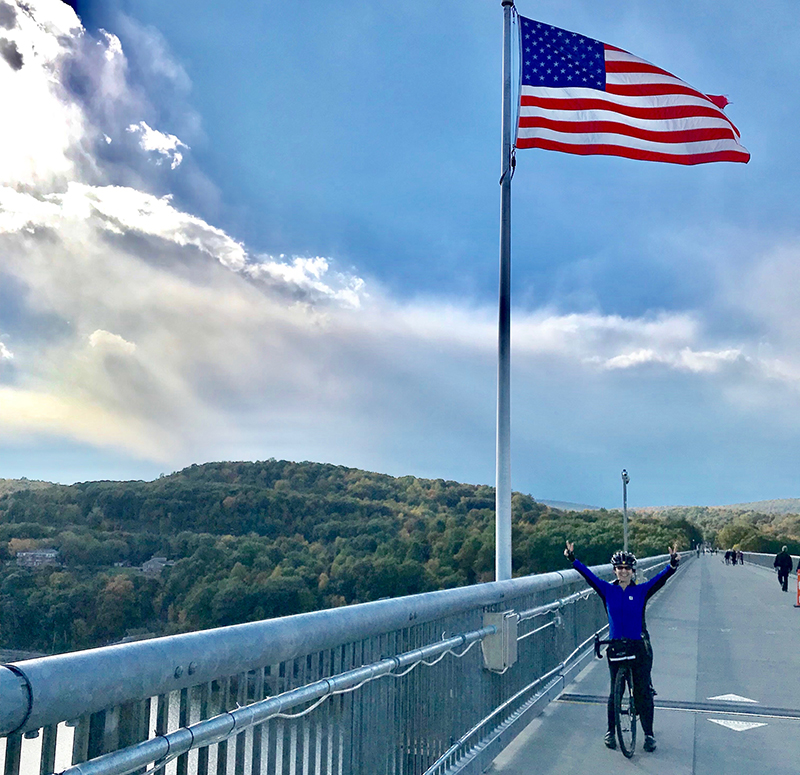Hot on the Rail Trail
Usage of rail trails spiked during the pandemic, and New York State offers fans more than 170 trails that cover almost 1,500 miles.


On vacation in Cape Cod, Karen Escolas, a medical science professor at Marist, Farmingdale and Dutchess County Community, rode a rail trail and instantly knew that she found a lifelong hobby. Biking the Cape Cod Rail Trail inspired her to continue her love for riding and to add more rail-trails notches to her biking belt. (For the uninitiated, a rail trail is the conversion of a disused railway track into a multi-use path, typically for walking, jogging, cycling, and sometimes horse riding and snowmobiling.) It also served as a key reason for her relocation to the Hudson Valley region from Long Island, where there are only about 45 miles of trails compared to more than 500 miles in the Hudson Valley region.
A growing number of people share Escolas’ rails-to-trails enthusiasm. Since the start of the pandemic last March, visitors to rail trails across New York State skyrocketed. According to Rails-To-Trails Conservancy (RTC), trail use spiked to 200% above normal at the start of the pandemic and was up 51% overall last year. Founded in 1986, RTC began with the mission of reimagining public spaces by utilizing unused railroads to create safe ways for everyone to walk, bike, and be active outdoors. The non-profit currently boasts more than 160,000 members, and works to bring more trails to more communities.

A determined biker makes his way down the Empire State Trail passing through Schenectady. Photo by Kaitlyn Tambasco.
RTC also advocates for public funding for rail trails, urban planning, and transportation issues, says Andrew Dupuy, RTC’s director of state policy. “The trails we work on are often multi-use trails, and that includes biking, walking, and rolling,” Dupuy says, pointing out these initiatives serve families and riders of all ages.
Another advocacy group for rail trails is Parks and Trails New York (PTNY). Founded in 1985, PTNY began when a group of park advocates joined together and decided NY’s state park system needed and deserved its own advocacy group. Since then, the organization’s focus expanded to include bicycle and pedestrian issues, trails, outdoor recreation, and active transportation issues. Project Director Dylan Carey says the group also performs a lot of advocacy work with the state government and acts as lobbyists for the trails.
“As it (the trails) connects more communities more immediately and more directly, I think you’re going to see the trail use continue to rise,” Carey says. “Each trail has its own story to tell.” Carey points out in New York in particular, there are many different types of trails. In fact, the state boasts 170 trails covering 1,491 miles. Some exist in rural parts of the state, and others travel through more suburban and city terrain such as the one proposed by Gov. Andrew Cuomo in 2017 and completed in 2020 — the Empire State Trail. This 750-mile trail runs from Manhattan to the Canadian Border, and from Albany to Buffalo, and connects more than 20 regional rail trails and canalway trails and can be used for walking, running, hiking, and bicycling.
More and more people find that kind of connectivity appealing. “Since the Empire State Trail has been complete, we've seen some kind of house postings, house listings that use proximity to the rail trail or proximity to the trail as one of the selling points,” Carey says. “And it really helps increase the value of folks looking to sell houses.”

The Mid-Hudson Bridge is a popular viewpoint for visitors of the Walkway Over the Hudson. Photo by Cheryl Cohen.
Beers describes rail trails as unique in that they each possess their own name, own character, and offer up one-of-a-kind experiences. As part of the Empire State Trail, bikers and walkers take advantage of the approximately 350-mile long Erie Canalway Trail, which brings visitors from Buffalo to Albany.
“Even as we start to move past the pandemic, hopefully, I do think we're going to see this permanent increase in trail use and, people's appreciation for what those trails provide in terms of chance to get outside exercise, join nature, learn some history, be with friends and family,” says Andy Beers, executive director of the Empire State Trail. “We're only going to see increased use and demand for these trails going forward.”

Biker Cheryl Cohen is victorious after biking the 13-mile Dutchess Rail Trail, with the ending spot at the Walkway Over the Hudson in Poughkeepsie. Photo by Bill Reuther.
Avid biker Cheryl Cohen admits she’s pedaled through many rail trails in New York and elsewhere. She’s preparing to bike some of the Erie Canalway Trail next month and stressed the importance of safety for those interested in experiencing a rail-trail route. One thing Cohen found by doing her own research, and speaking with other bikers, was information about bugs on the trail. Thanks to her diligent bug research, she escaped the Brood X cicadas seen in June in the Northeast, deciding instead to bike the Erie Canalway Trail in July.
Aside from knowing about the area of the trail, it’s also important to be prepared and aware. “When you ride by yourself, you want to be protected,” Cohen says. “You never know what might happen.” She recommends bringing pepper spray or a small knife — especially on desolate trails. Escolas echoes the idea of being mindful in desolate areas and suggests paying attention to how many people are on the trail at once so that a rider can leverage the “safety in numbers” approach to travel.
Escolas also looks for opportunities on the trail where she can walk and seek out a different experience. But, ultimately, rail trails deliver something bigger, more meaningful. “For me, it's more than just exploring and finding new places,” Escolas says. “The first time I came up and rode the trails that connected on the walkway over the Hudson, it was amazing. This really made me feel like this is where I wanted to be. That was one of the defining moments for me.”

Our pursuit of outdoor joy is remiss without the acknowledgement of the occupation of unceded Indigenous land. We are students and journalists working, writing, and living on the land of the Haudenosaunee Confederacy, comprising the Six Nations made up of the Mohawk, Onondaga, Oneida, Cayuga, Seneca, and Tuscarora nations. However, acknowledgement is not enough. Read More.